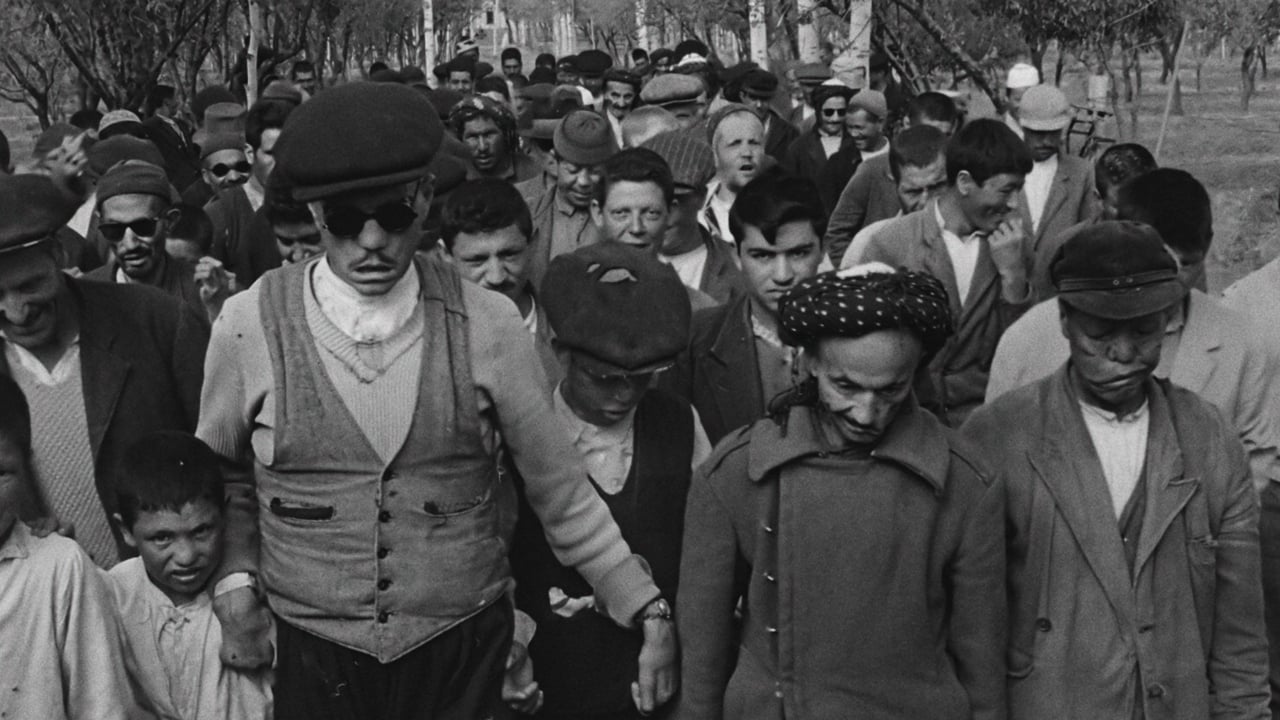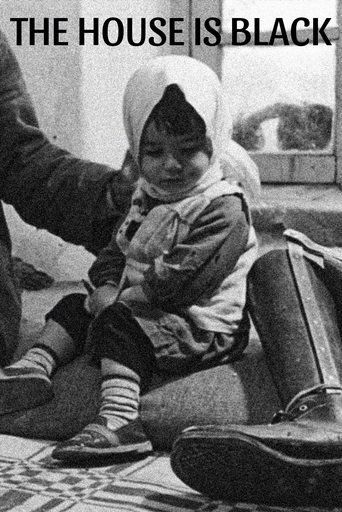

This 20 minute short black-and-white Persian film is one I found in the book 1001 Movies You Must See Before You Die, I knew nothing about, especially with the simple but intriguing title. Basically this real-life film set in in Tebriz, Iran focuses on a leprosy colony, and also focuses on the human condition and the beauty of creation. Many of the lepers in the colony have become facially deformed, their fingers and toes have withered away with the chronic disease, and they have become almost forgotten souls. Throughout the film there are quotes read by the narrator, director Forough Farrokhzad, of passages from the Old Testament, the Koran and her own poetry, religion and gratitude play very big parts for the lepers. The title it should be mentioned is a scene near the end, where a teacher asks students to write down a sentence with the word "house" in it, and one of the lepers writes on the blackboard "the house is black", this is probably an indication of seclusion. This intimate film really hits home with distress caused by the leprosy, and digs deep into the heart of hopelessness within the human spirit. This film did not get a lot of attention when it was first released, but it has since become something of a landmark in Iranian film, a most interesting documentary. Very good!
... View MoreI noticed some reviewers thought that MAYBE this film is about something other than its obvious subject, leprosy. Well, after seeing it, I think it's about leprosy. Sure, there's a bit more to it than that, but the film really does seem to be about lepers.As the film progresses, various Muslim prayers and quotes from the Koran are read either by the narrator or by some of the subjects in the film. These are all about beauty and grace of God and are a sharp contrast to the lepers you see throughout the film. Although they appear very pitiful, most seem rather happy, though the film doesn't appear to try to say 'hey, it's great to be a leper'--more that in this day of medical miracles, Hansen's Disease (leprosy) IS curable and it's a horrible thing that so many go untreated. Forugh Farrokhzad (who wrote, directed and appears in the film) does not discuss WHY so many in her native Iran were untreated at the time--just that there is a SHARP contrast between the goodness of God and the plight of these people. This film is unpleasant and will make you think. However, it's a very well made film--one that strikes the viewer with sadness and forces you to look into the ugly face of the illness.
... View MoreOne must consider why the religious emphasis is there. Everyone in this film has a message; the Iranians are known for their no frills directness when it comes to film-making.What is Farrokhzad saying about religion?Additionally; is this film entirely about leprosy, or does it hint toward other kinds of corruption?Is the previous reviewer certain that there were scripted scenes? I admit it's been a while so I can't clearly remember; however another rule of Iranian film is that can be very hard to distinguish the scripted and the natural. If you want to test this, check out Kiarostami's wonderful "Close-up" or Samira Makhmalbaf's "Apple". The events are real as are the actors, beyond that...well just watch em. With your thinking hat on.OK i'm done.
... View More`There is no shortage of ugliness in the world.' the opening voice-over states as we see a horribly disfigured woman staring into a mirror. And by the film's end, we truly get an understanding of what she means.`Khaneh siah ast' (The House is Black), written, directed and edited in 1963 by Forugh Farrokhzad is a brilliant piece of work done on an issue that has hardly been portrayed in any kind of film, fiction or non. Filmed in B&W on location somewhere on a Middle Eastern island, the film portrays a rapid series of events during the everyday lives of all of its inhabitants that are suffering from various stages of leprosy.Cinematographer Soleiman Minasian uses mainly natural light and captures the pure essence of what living with leprosy is actually like. It is very startling. All the more startling due to Farrokhzad's rapid editing and cutting and disorienting flash-pans. And although the film is a documentary, there are certain scenes, which are entirely fabricated and contrived. One scene in particular is an actual tracking shot through a classroom where there is a coherent edited sequence of dialogue spoken between a teacher and his student. And although no one in the film is an actor, the scene was indeed scripted.The reason the film is so brilliant is because Farrokhzad juxtaposes the images with extremely religious voice-over narration. Each individual that has leprosy prays to God and gives thanks for being alive in this world. It is harshly ironic that all living lepers are giving thanks and praise to a God that forces them to live through painful physical suffering everyday of their life.They say leprosy is a curable disease, however, the impact and feeling you get from experiencing this film, is not.
... View More